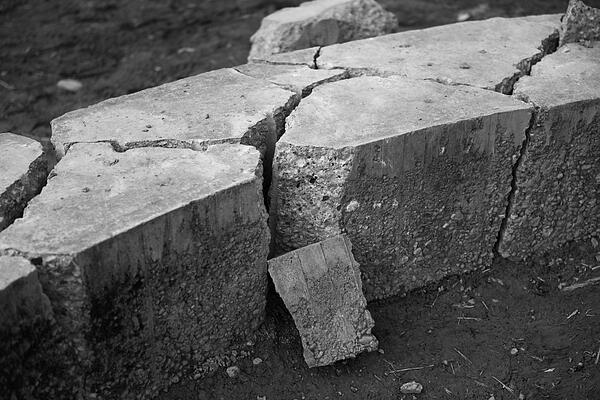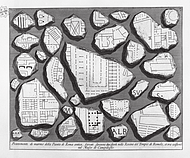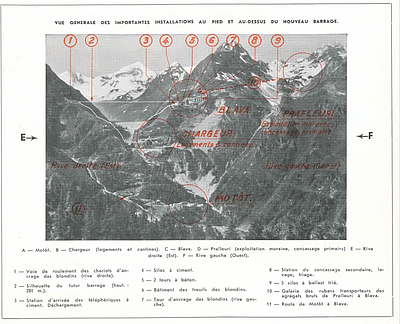Excess
Excess

Repair, restore, refurbish, preserve, demolish, conserve, maintain, reuse, recycle, up-cycle, upgrade. From repair to upgrade we can insert an increasing number of words describing design and making associated with working within existing fabric. Each verb denotes a position, a method, an attitude towards the past, the present and the future, but also describes a human action within an existing building or object. Each word carries with it a specific way of seeing and a way of doing yet despite the differences, which can sometimes be fiercely defended, they testify how the ground of architecture and design is shifting. There was a time, not long ago, when architecture and design were firmly indexed to all things new. The more modest but universally practiced acts of everyday adaptation and repair have continued largely unnoticed in the background of the new.
The discovery that steel and concrete share the same thermal expansion coefficient transformed the 20th century. If you encase steel bars, which is excellent in tension, in the concrete, which is excellent in compression, you produce the wonder compound material to emancipate the world. Together they act in sublime harmony for housing, industry or infrastructure. Separated they fall in an entangled mess of wire and rubble, aggressively opposing any kind of future reuse. It would take another century to understand that this was one the most carbon-emitting marriages which we are still far from reforming.
We shall challenge the perception of waste and discover the possibilities of use. Demolition, disassembling, and detangling shall become our resource and design tools, while we consider how users are central to the energy history or our built environment.

Do not try to find a quick definition for the city. It is much too big, you have every chance to get it wrong. If that was Georges Perec’s hypothesis in Species of Spaces half a century ago, it is more than proven today. Climate change, social fragmentation and the excesses of global capitalism have made any attempt at defining the urban and the architectural, at best, incomplete but most likely thoroughly misguided. It was, maybe unwittingly, Piranesi who first visualised this notion in the plan of Rome drawn on broken stones and equally unwittingly introduced the island and the archipelago as a powerful urban metaphor. Not only does it offer comprehensible models for cities, too complex to apprehend as a singular whole, the spatial elegance of a fragment makes a compelling site for autonomous architectural thinking. Three years after Perec, Ungers, Koolhaas and others rebooted the green archipelago as a proto-environmental manifesto for Berlin.

But there is no such thing as an urban heat island. That is not to say that the city is not overheating. It is. And it will continue to do so. But the exaggerated heat we experience increasingly often in cities is no more disconnected from its surroundings and the world than Robinson Crusoe was isolated from western society when stranded on the mythical island. His money may have temporarily held no value, but it traveled there on a ship and, however tenuously, landed on shore with all the values that burden the modern human. Maybe it is the sheer impossibility of an island that keeps the idea so alive in the imagination. A place, away from the troubles of the world, blissfully isolated and complete onto itself, in short, everything the contemporary world is not. Everything is so interconnected in the Anthropocene that even the smallest act of design reflects and refracts infinitely through culture and nature. The idea of place may be nothing more than the weaving together of these connections until they form a discernible pattern. Each thread tying one thing to another through materials, language and custom, overlaid onto multiple natures that precede, coexist with, and follow human occupation.
Architecture today is caught in a vicious cycle of contradictions; damned if you build, damned if you don’t. Damned for excessive contribution to or even causing climate change and inequality, damned by its absence of provision for a growing city like Zurich. Virtually every site in the city limits is reserved for development. There is an excess of virtually everything except moderation. Densification by replacement remains the dominant paradigm for good spatial and social governance. Districts, neighbourhood and zones have long been the norm for legislating and organising urban development into virtual islands. Modernist planning, separating habitat by building programme turns the island metaphor into reality by eliminating nature’s non-compliant complexities, which have emigrated to the more tolerant spaces of infrastructure and industry.
Along the Gleisfeld, new ecologies have taken root creating habitat for many away from the destructive forces of development. And occasionally, it has drifted inland where the masterplan has not yet seized the real estate opportunities. Hermetschloo is placed along the Gleisfeld with the spatial and architectural characteristics ripe for island thinking. It is enclosed by railway tracks to the north and a busy road to the south bending the site into the shape of a lens one kilometer long. A ruderal ecological corridor passes through a loose arrangement of industrial buildings and yards. Amongst them are three of the most remarkable examples of industrial architecture in Zurich; Franz Carl Weber built an inverted concrete ziggurat to store its toys on the inside and, breaking the Swiss tradition for discretion and sobriety, festooned the outside in a playful collection of neon signs, both Duck and Decorated Shed. It is attached to one of Max Vogt’s tours de force in concrete for SBB along the Gleisfeld. And if concrete defines these railway buildings, the Schnellgut Bahnhof gives the most explicit and refined expression to the profound relationship between concrete and trains in Switzerland. Architectural observers often admire Switzerland for the quality of its concrete and railways, thinking, quite reasonably that one efficiently facilitates visits to the other. Concrete and infrastructures mutually constructed one another. Tunneling pierced mountains with railway lines supplying aggregates and cement to meet the building demands of a newly mobile workforce. The sculptural forms of Max Vogt’s concrete SBB buildings are solidified monuments to the extraction and displacement that made the railways they are built to oversee. The elegant precast shells covering the Schnellgut Bahnhof in repeating twenty-five meter spans are a direct measure of the railway carriage that brought them into the city. If Schnellgut Bahnhof gives architectural form to a national infrastructure, the Micafil factory on the southern boundary assumes a more cosmic profile. Built in 1977, when solar architecture still promised to free architecture from fossil fuels. And while the solar panels have long since disappeared, the section still optimistically steps upwards towards the sun. These buildings are made of highly specific relationships, evolved over time and across geographies. There is no pure form, or abstract space at Hermetschloo. Every building asserts deep relationships to territory and cosmos.

Since the 1990’s industries and logistics have gradually left the city centre. Luckily new uses and users have filled some voids. Franz Carl Weber warehouse has been refurbished and found a business cooperative to use the building productively. The future is far less certain for the Schnellgut Bahnhof, Micafil and all the species that have established the ecological corridor through the site. LooSchloo from Hermetschloo means small woodland, an evocative reminder of former conditions before densification finally comes. It is remarkable that there has been no significant plan for the place since 2005 and the site remains largely in its first industrial condition. But it is in a designated tall building zone. The pressure to develop is tangible, inevitable.
Densification is slowly bending to the winds of climate change with more sustainable construction, community participation and circularity. But the legacy of concrete at Hermetschloo, matched across the country, still relies on an elsewhere along the tracks, where the messy entanglement of concrete and steel can be disposed out sight. Just as material as cement, sand and gravel, extracted far away, arrived miraculously on the back of a train, it will disappear again to be granulated and dispersed as aggregate or landfill. Before new development replaces loose working yards, concrete is turned to dust and rubble caught in entangled nests of steel reinforcement. Windows, doors, metal and timber are eagerly reclaimed, signaled by reassuring patchworks of irregular assemblies, but concrete is less cooperative.
The discovery that steel and concrete share the same thermal expansion coefficient transformed the 20th century. If you encase bars of steel, which is excellent in tension, inside concrete, which is excellent in compression, you produce the wonder modern material to emancipate the world. If you combine it with the railways, they act in sublime harmony for housing and industry. Separated they fall in an entangled mess of wire and rubble, aggressively opposing future reuse. It has taken a century to understand that this was one of the most carbon-emitting marriages ever, and we are still far from reforming it. Can we avoid these ubiquitous mineral-ferrous knots? The elegant concrete shells roofing the Schnellgut Bahnhof are the architectural pinnacle of a material system that literally underpins the city. Can they remain useful without returning to dust elsewhere? Can Hermetschloo rebuild from what is there? Can we design for existing concrete and not against it?
This semester, we shall look at how this place can weave new connections, repair old ones worn by use and neglect. What will become of Schnellgut’s heroic interior? Can Micafil re-turn to the sun and show us what more it can do? Can ecology grow larger and more complex for the benefit of all species, maybe even humans too, whose will and need to build new habitats is real? Can Hermetschloo be its own quarry as the country’s geology was for its railways? Can density exist without excess?